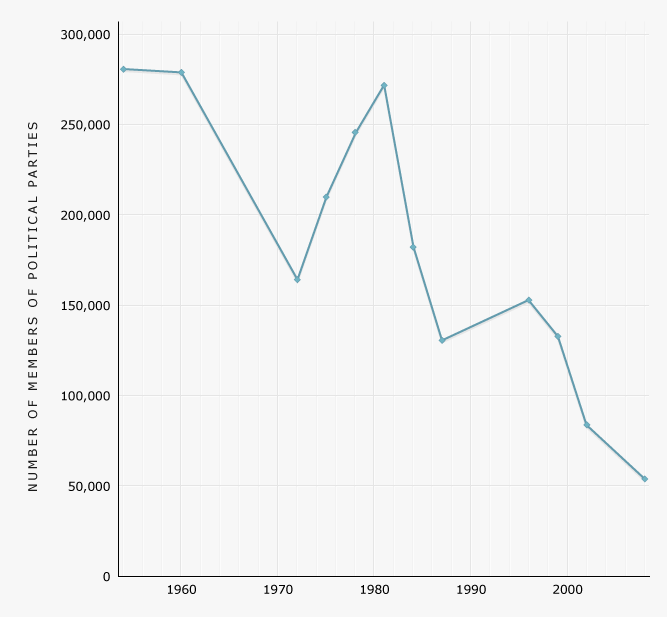
Party membership was high in post-Second World War New Zealand, with 22–24% of voters belonging to a party. It had fallen to 2–5% in the 1990s, and continued to shrink thereafter. The variable estimate is a result of different definitions of membership. Until the mid-1990s, political parties were not required to provide membership numbers, and often resisted doing so or inflated the numbers that were released. If sympathisers who give donations, those on mailing lists, or those in affiliated organisations are included, the membership estimate is higher. If membership is limited to those paying dues, the numbers are much lower. Since 1996, membership numbers have been required by the Electoral Commission to enable it to allocate broadcasting time and money to parties. Despite this, there is no official data on political party membership.
Te whakamahi i tēnei tūemi
Te Ara – The Encyclopedia of New Zealand
This item has been provided for private study purposes (such as school projects, family and local history research) and any published reproduction (print or electronic) may infringe copyright law. It is the responsibility of the user of any material to obtain clearance from the copyright holder.
Source: Bryce Edwards, 'Political parties in New Zealand: a study of ideological and organisational transformation.' PhD thesis, University of Canterbury, 2003, tables 6.2–6.3; Bryce Edwards, 'Party membership 31: conclusions.'. Liberation, 26 September 2008.





Tāpiritia te tākupu hou